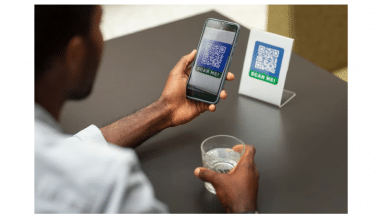Some practices and routines might help you stand out as an expert in a professional setting. When hiring new employees, some firms place a greater emphasis on interpersonal and communication skills than on technical expertise. For this reason, it’s critical to always act professionally. Hence, in this article, we will succinctly explain all you need to about business etiquette email, its examples, classes along with business etiquette with Chinese. So, keep reading!
What Is Business Etiquette?
The term “business etiquette” refers to the standards of behavior that are generally expected and often mandated in a given industry. As usual, it is sustained by the people who make up a group. A lack of respect for business norms is widely seen as rude behavior. When people act in this way, they risk the contempt of their colleagues.
It’s crucial to practice good business etiquette since doing so fosters an environment where all employees feel comfortable speaking openly and honestly with one another, which in turn boosts productivity. When employees are treated with dignity and respect, they exhibit greater pride in their work, which in turn improves their connections with clients.
What Is the Purpose of Business Etiquette?
Business etiquette improves job satisfaction and customer interactions.
What Are Basic Rules of Business Etiquette?
- When in uncertainty, connect to other individuals.
- A handshake remains the norm of professionalism.
- Continually use “Please” and “Thank you.”
- Don’t interfere.
- Observe your language.
- Double-check your work before sending.
- Do not enter someone’s office without prior notice.
- Avoid gossiping.
Business Etiquette Examples
It’s important to put your best foot forward in the workplace no matter how much or how little experience you have, from the first day of an internship to the last day of a career. Maintaining an air of professionalism from the start is essential to making a good impression on coworkers and making progress in your career. However, we have compiled a list of business etiquette examples that will help you achieve this. They include:
#1. Take Note of Names
This is one the examples of business etiquette. Names are typically among the earliest identifiers we acquire. It’s the name by which you’re known and addressed. Don’t forget to provide your surname when you introduce yourself. In addition, remember people’s names when you first meet them. It’s best to ask sincerely if you are unsure of the correct pronunciation. As a result, they will know that they have your attention and that you value accuracy. Don’t accidentally make up a nickname for them or botch their name. When you meet a lot of new individuals at once, it might be difficult to keep their names straight in your head. However, if you want to tell them apart, one strategy is to zero in on a distinguishing feature.
#2. Greetings
Welcoming people is not only courteous but also helps you connect with them. The people you’ve just greeted may be anyone, so treat them all with the same warmth.
Hello and how are you? alternatively, just a nod and a grin would do. Yet if you add more, they may think of you as nice and remember you. Also, don’t try to force a dialogue on someone if they seem rushed or uninterested.
#3. Always Be Punctual
This is also one of the examples of business etiquette. Business time is valuable! Hence, punctuality pertains to office visits, meetings, and duties. Being on time reflects your business etiquette. Punctuality displays accountability and professionalism. Time management skills can also be improved. Arrive early, considering both internal and external conditions. You can also track your everyday activities to practice punctuality.
#4. Dress Properly
This is one of the examples of business etiquette that dictates how credible you appear. Knowing your activity helps you dress properly. So, endeavor to dress to impress while following business regulations at work.
#5. Disregard Gossips
Undoubtedly, unethical behavior like office gossip among employees is discouraged. As a bonus, strong and ethical interaction is an essential part of productive teamwork and positive team chemistry. That is to say, when employees engage in gossip at work, it drives a wedge between them, which reduces the effectiveness of their cooperation.
Business Etiquette Email
The business email etiquette helps you speak properly and convince prospective employers, business associates, and consumers. Communicating well at work may help you succeed. That is to say, an email can help you improve your communication skills. Here is the business etiquette email to note.
#1. Include a Clear and Concise Subject Line
Suitable subject lines include “Conference date changed,” “Brief inquiry regarding your synopsis,” etc. “Business managers frequently decide to open a message depending on the subject line,” Pachter explains. Pick one that conveys to your readers that you care about and are tackling the problems they are facing in their businesses.
If you are employed by a business, this business email etiquette states that you’re expected to communicate with the firm using the company email. However, Pachter warns that if you work for yourself or prefer to use your private mailbox on occasion for job-related communications, you should exercise caution when deciding on an address.
In addition, your email address should always include your name, so the recipient will know who you are when they receive your message. Notwithstanding your undying devotion to juicy drinks, you should avoid using email addresses like “yourgirl@…” or ” juicylover@…” in the professional world.
#3. Maintain Brevity
Every day, office workers receive far over 100 emails, making it impossible to read each one in its entirety. Hence, having the receiver peruse your email in an attempt to ascertain its purpose is a terrible idea. Instead, you should state your intention for sending the email right away. Get to the point quickly, don’t ramble, and use simple, easy-to-read words. There should be only one purpose for your email, but if there is more than one, you may want to try using bullet points.
#4. Steer Away From Humor
This is also another essential business email etiquette. Even the funniest jokes fall flat without the correct inflection and delivery to set the tone. Hence, because of this, it is easily misunderstood in an electronic message. The drafting process is particularly unforgiving of humor since the reader can take your words at face value. Professional emails are not the place for jokes unless you are close to the recipient. It’s not even a matter of misunderstandings; what makes you laugh may not make the other person laugh.
#5. Verify That You’ve Chosen the Correct Recipient
When using an email address database to complete the “to” field, Pachter advises caution. “It’s simple to go with the erroneous name” while sending an email, which can be unpleasant for both the sender and the recipient.
See more on: EMAIL ETIQUETTE: Meaning, Rules & Importance
Business Etiquette with Chinese
The business etiquette with Chinese differs significantly from their Western counterparts. So, if you’re thinking of establishing an outlet in Chinese, familiarizing yourself with the local business etiquette and methods of operation is a must. You may get off to a good start with these guidelines on business etiquette for Chinese.
#1. Recognize the Value of Face
In Chinese business etiquette, “face” is of paramount importance. The term “bearing face” is particularly apt for describing this phenomenon. You can either acquire or lose face in every encounter with a Chinese person. So, if you want to win face, you should complement others, whereas if you want to lose face, you should reveal your failure.
#2. Do Your Best to Dress Respectfully
Get the word out about how you should dress for work. Most officials and managers at the highest levels in China dress professionally for meetings, whereas those in middle management and below can appear more casually. When in doubt, a suit is the safest bet for conveying seriousness. Women in Chinese business ought not to wear low-cut shirts, which are considered inappropriate both by men and women in the country. Instead, they should stick to darker, muted hues.
#3. Punctuality
In the Chinese corporate world, punctuality is valued even more highly than in Western commercial settings. The act of arriving late is insulting and impolite. So, prepare for potential delays by leaving extra time to reach the meeting location.
#4. Enter the Area Sequentially
The Chinese have a long-standing tradition of deference to authority, and as a result, they tend to approach a room in a strict hierarchy structure. As soon as you walk into the room, start your practice with your teammates. Those with the most seniority should enter first, followed by those with the next most seniority in descending order.
#5. Get Some Quality Printed Materials
Anything printed in color may have different connotations in China than in the West, so it’s advisable to stick to black and white on high-quality paper for the meeting. Also, the etiquette demands that business cards and other promotional materials need to be available in Chinese. While working with Chinese coworkers, it’s important to always bring additional copies of printed information to avoid upsetting anyone who doesn’t obtain a copy.
Business Etiquette Classes
The business etiquette classes are made for businesses that want to make sure their staff members understand proper conduct in the office. Included in the business etiquette classes are instructions on how to conduct oneself appropriately in a variety of social settings, from the office cubicle to the online community to public locations. Below is a list of various business etiquette classes:
#1. Facsimile
Healthcare facilities, institutions, and logistics use faxes regularly. Computer-sent facsimiles are reducing their use. Thus, they need these business etiquette classes. To create a professional fax cover sheet, include the recipient’s location, contact details, fax number, a narrative of the information, and the sender’s phone as well as fax numbers. Also, take into account fax safety and secrecy.
#2. Business Writing
Written communication is coherent and irreversible. Deals, presentations, court filings, official documents to clients, intent statements, and client’s letters are still written in the workplace, despite the rise of email. Although emails contain many textual communications.
#3. E-mail Communications
For many years now, e-mail has served as the primary method of contact between business professionals. By the rules of proper business etiquette, all professionals should maintain a formal demeanor, regardless of the medium being used. You should use email primarily to convey a simple, direct message to the recipient. The same care and consideration should be given to emails as to any other kind of business correspondence.
What Are the 3 Rs of Business Etiquette?
It is essential to have a working knowledge of the “3 Rs” of proper business etiquette, which is as follows: recognition, respect, and response.
What Are the 3 Principles of Etiquette?
The three principles of etiquette are respect, honesty, and consideration; every manner is expected to express at least one of these values.
Do and Don’ts of Business Etiquette?
The do’s and don’ts of business etiquette are as follows:
- Never develop a relaxed demeanor at work.
- Do not peer into the cubicles and workspaces of others.
- Put your cell phone on vibrate or quiet mode at the workplace.
- Do not access another individual’s notepads, registrations, or files without authorization.
What Is the Most Important Aspect of Business Etiquette?
Etiquette in business places a premium on clear and effective communication. Be conscious of how you interact with your coworkers in group settings as well as in one-on-one settings, as it is not often the content of what you communicate but how you say it that is the most important factor.
What Are the Five Types of Etiquettes?
They include:
- Work etiquette.
- Table manners and meal etiquette.
- Professionalism.
- Communication etiquette.
- Meetings etiquette.
References
- Edu.gcfglobal.org
- Everhour.com
- Careereducation.columbia.edu
- flowrite.com






